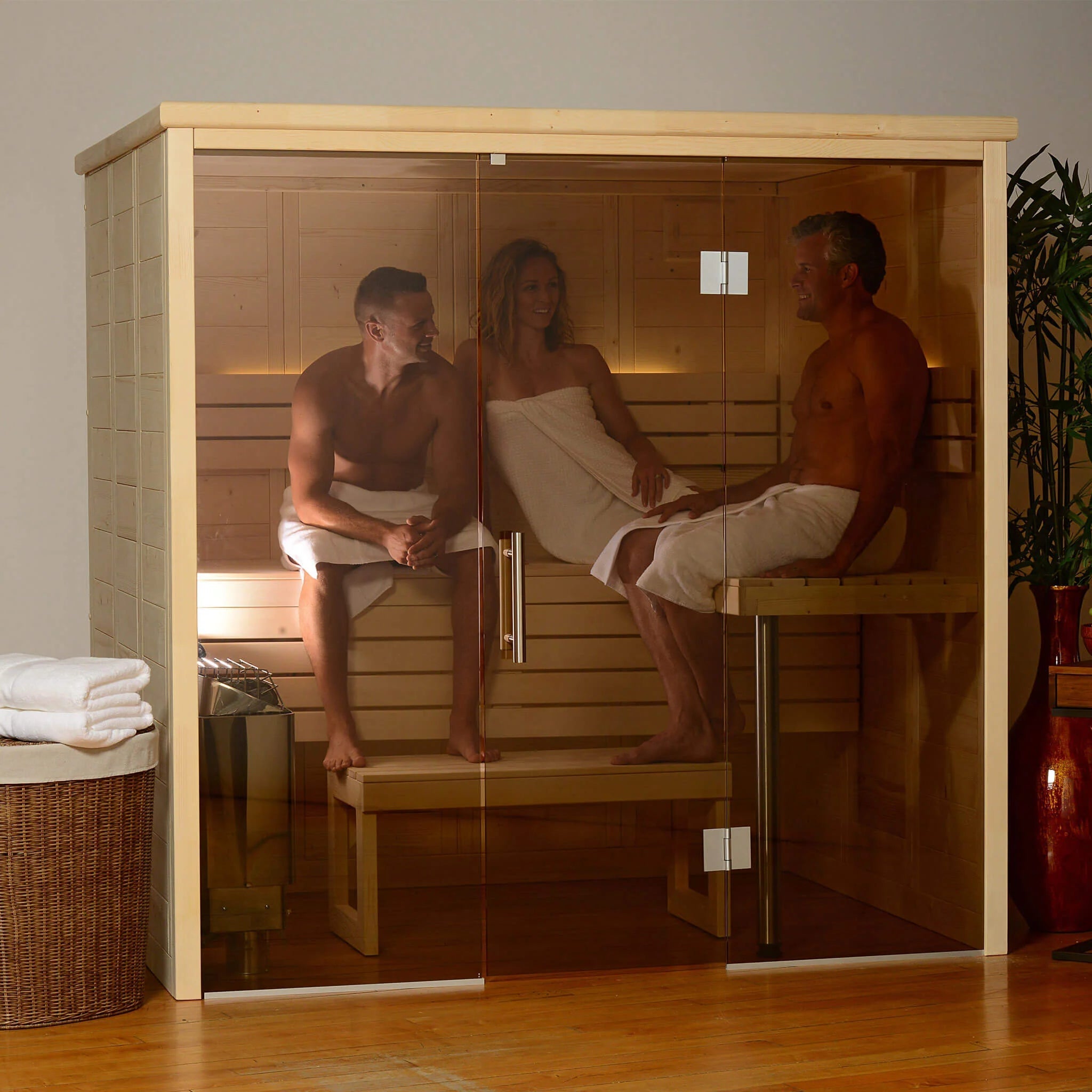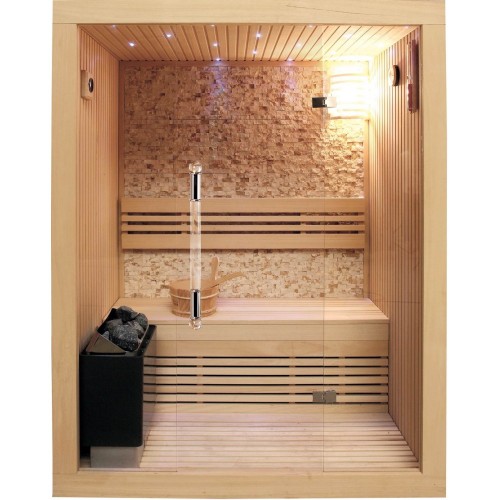9 Easy Facts About Traditional Sauna Described
9 Easy Facts About Traditional Sauna Described
Blog Article
Not known Details About Traditional Sauna
Table of ContentsLittle Known Facts About Traditional Sauna.The 3-Minute Rule for Traditional SaunaThe Ultimate Guide To Traditional SaunaNot known Incorrect Statements About Traditional Sauna Indicators on Traditional Sauna You Should Know
Most of the weight shed in a sauna is water loss and is re-gained upon rehydrating. Nevertheless, undoubtedly sauna can be a vital part of a healthy and balanced weight loss program. To consider the distinctions between typical and IR saunas, I will separate these into verifiable, theoretical, and fabricated distinctions.Therefore, the most popular factor in the saunawhich goes to the ceiling directly above the sauna heateris generally between 185 and 190 F. Claims that a typical sauna exceeds 200 F is simply not true and not applicable for electrical saunas marketed in the US. The temperature level for a far-infrared sauna is normally established in between 120 and 140 F; however, unlike the standard sauna, the objective in and IR room is not to accomplish a high temperature.

When a typical sauna has actually been appropriately heated, the sauna wall surfaces are warm, the air temperature level has actually attained set temperature and the rocks are extremely warmed. As an interesting side note, the heated wall surfaces and the rocks are sending out far-infrared warmth, integrated with the heated air, to create an "wrapping up heat".
An Unbiased View of Traditional Sauna
When the heat is attained, the aspects cycle on and off to keep the high temperature. A lot of traditional sauna users take pleasure in putting water over the rocks to develop vapor to increase sauna moisture degrees. The advantages of putting water over the rocks include: making the room a lot more comfy, moistening the nasal passages, and allowing the use of aromatherapy by mixing necessary oils with the water.

When the energy goes into the body, it triggers the body temperature to enhance and inevitably results in sweat. In an infrared sauna it is necessary for the emitters/heaters to continue to be on almost frequently. Since there is no mass of rocks to retain warmth, the sauna will cool down if the emitters turned off.
Fascination About Traditional Sauna
As mentioned above, the sauna bather in an infrared area wants to place himself in front of running emitters to obtain optimal advantage from the warmth. The heating time for both spaces can be extremely various, depending on how the rooms are used. For a standard sauna, a bather needs to allow 30-40 minutes for the room to achieve a preferred temperature and to properly pre-heat the rocks.

A well created sauna will generally achieve a temperature of 150-160 F in concerning 30-40 minutes. For hotter temperatures, the area may need to warm for a longer duration.
To some, 15 mins was "thrown away" while the infrared power heated the timber panels rather than warming a body, while others find a pre-heated area to be extra comfy and think a raised beginning temperature is essential to begin sweating. The size of suggested use for each and every space see this website is around the exact same (10-15 mins per session); nonetheless, because of the lower air temperature levels and the capacity to really feel the impacts of infrared warm faster than a traditional sauna, it is not unusual for a person to spend a total amount of 20-30 minutes in an infrared sauna.
About Traditional Sauna

The average cost per kWH of electrical energy in the united state is approximately $0.11, so a 4.5 kW heating system will certainly cost around $.50 to run for one hour, if the heater runs constantly for one hour. Normally a sauna heating unit will run for 75% of the very first this hyperlink hour and official source 50% of subsequent hours on given that the components cycle once the set temperature is attained.
A two person far-infrared space is typically physically smaller than a conventional sauna, typically concerning 4' x 4' or smaller. The IR home heating system is generally 1.5-1.7 kW using a 120 volt 15 amp plug-in service. Because the area can be used quicker than a sauna room, we will assume the area is used for to of an hour consisting of warm up time.
There is a seldom talked about distinction in the social experience in between the 2 spaces. While our culture has shed a few of the social benefit of the standard sauna experience, it can be extremely socially rewarding (Traditional Sauna). From family time in the sauna, to heart-felt conversations with significant others, to sauna partiesthe standard sauna experience can cause intimate interacting socially
Fascination About Traditional Sauna
Most greater end infrared rooms consist of tinted light therapy, noise systems and full-glass fronts.
Report this page